In the municipal territory of San Giovanni Bianco, the two routes (tourist and hiking) coincide, and the Via Mercatorum route also follows them in the section from Antea to Cornello. The itinerary runs in the valley, crossing the entire built-up area, initially on the left bank of the river Brembo, then, from the Ponte Vecchio (old bridge) in San Giovanni Bianco, it follows the right bank, so that after the town, the path can approach the mule track that climbs to Oneta and on to Cornello. Access to San Giovanni Bianco is provided by a fork on the left bank branch of the valley cycle-pedestrian path. The old centre, small in size, is set on the spur at the confluence of the rivers Brembo and Enna.
Tracciato Storico
“Having gone through the Val Grande valley and entering the municipality of San Giovanni Bianco, the Way then continued along the river Brembo, passing a portico that can still be seen in Via Gratarolo and the valley of the river Enna on a bridge that can be taken still today. Alongside, the bridge for the existing road was built in 1882. After it had left San Giovanni, the old track that Priuli abandoned in order to build a more convenient route, climbed up to the medieval village of Cornello. The Priula Way, on the other hand, ran further down, alongside the river, along the route of the present-day carriageway.”
Itinerario escursionistico
Difficoltà: Turistico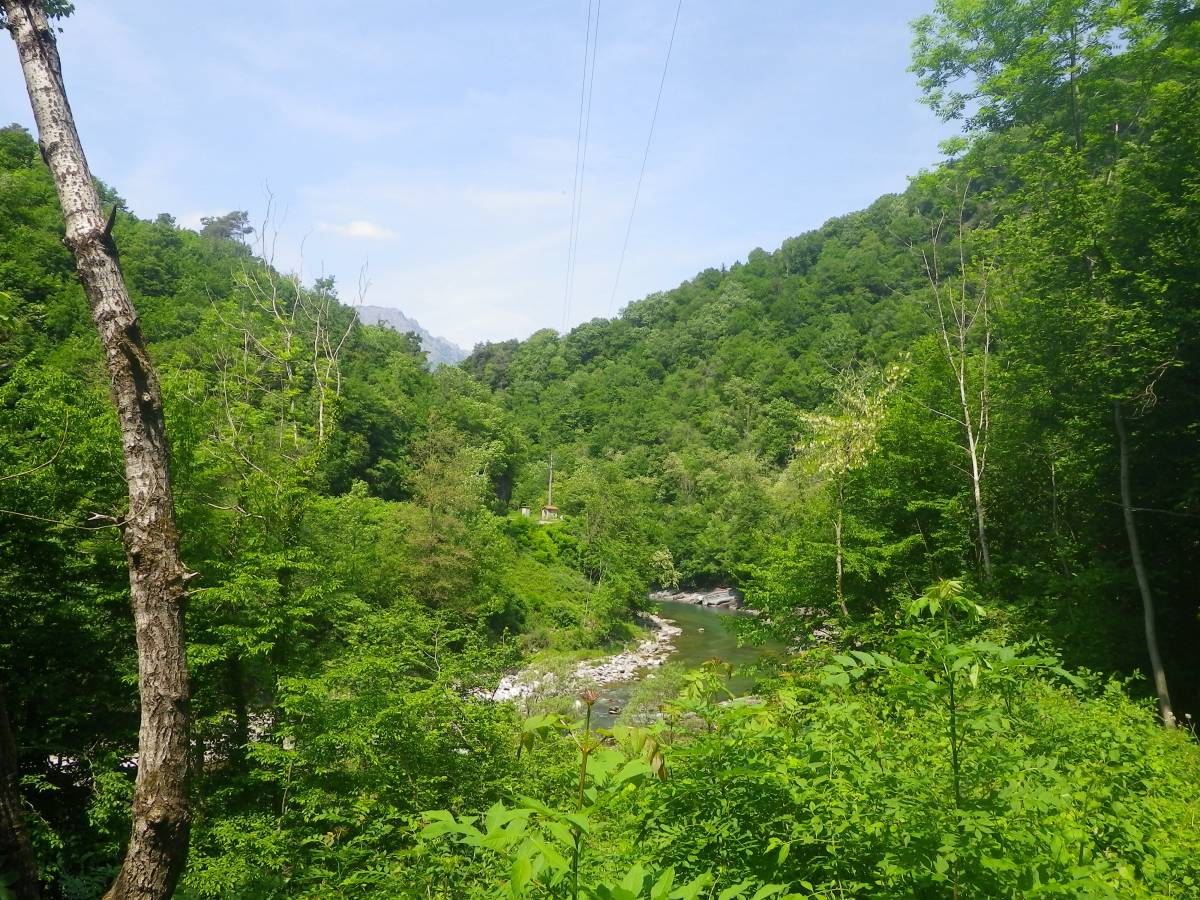
Bank of the river Brembo between Valle Asnera and Tre Croci. The path, which includes some historic elements, runs alongside the river which, in this stretch, has a pleasant appearance, like a mountain stream, with a deep river bed and many pools amongst large boulders. The banks are cloaked in woodland.
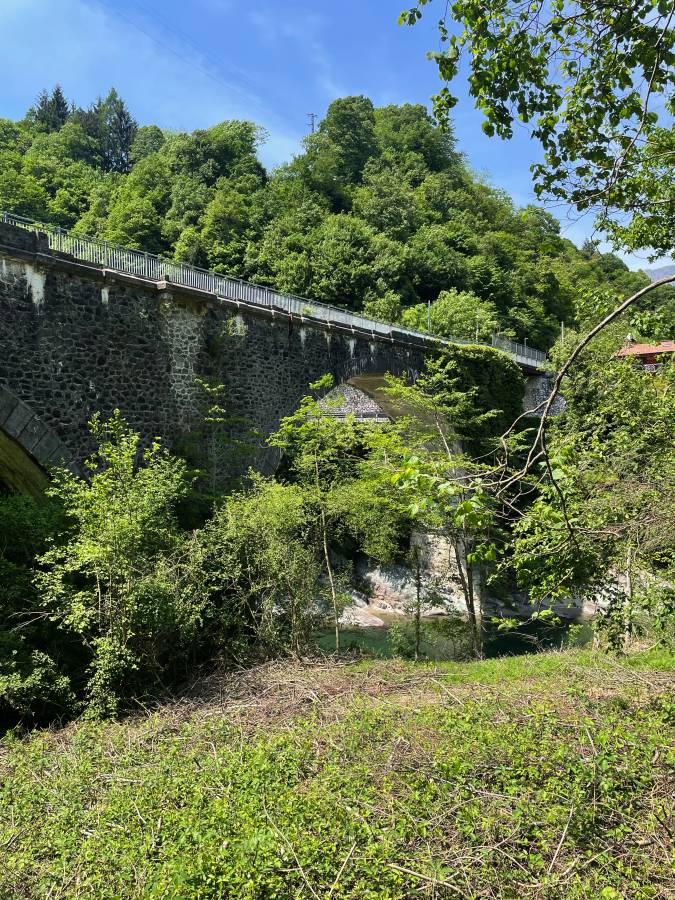
Bridge over the river Brembo, part of the disused railway. One of the most important structures of the old railway in the valley, now used by the cycle-pedestrian path, it was designed by engineer Ferdinando Leopardi. It crosses the river and the valley road at Tre Croci (at distance 28 km + 588 m), with two spans of 28 and 30 metres respectively.
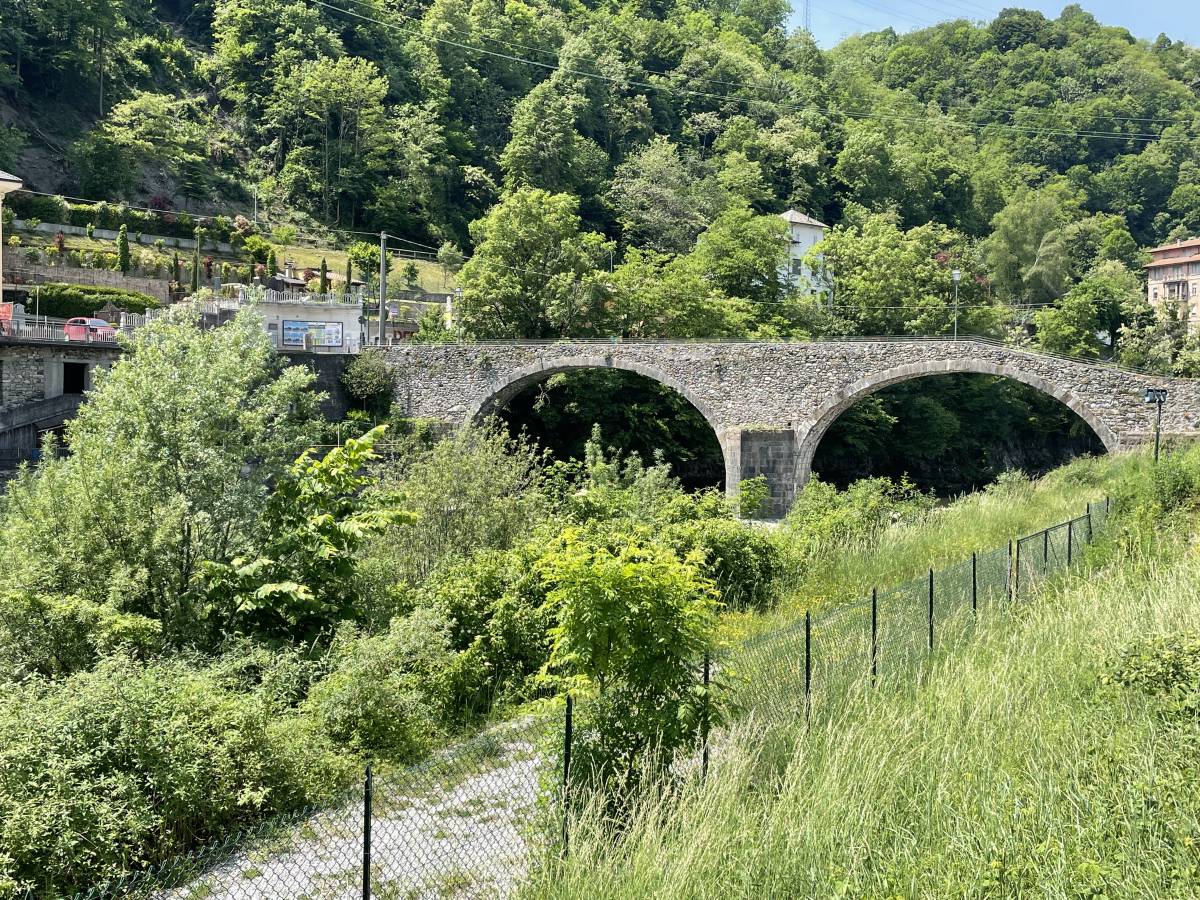
(Friars’ Bridge). This bridge owes its name to the Capuchin friars who commissioned its construction, from 1690 to 1699, after the Capuchin monastery which had been built in 1640. The bridge was placed at San Gallo on the left bank of the river Brembo, in order to facilitate transit from San Gallo to San Giovanni Bianco. The friars performed their charitable work for over 150 years, until 1798 when the monastery was suppressed by the Cisalpine Republic. With the new government, the building was put up for sale and bought in 1799 by Count Pietro Giupponi, who also obtained possession of the bridge, Ponte dei Frati. Ownership successively passed to Mrs Mary Guerinoni Piccinelli, and then to the municipality of San Giovanni Bianco in 1891. The bridge survived the disastrous floods of the Brembo, in particular those of August 1842 and July 1873. http://mercatorumpriula.eu/patrimonio/ponte-dei-frati/).
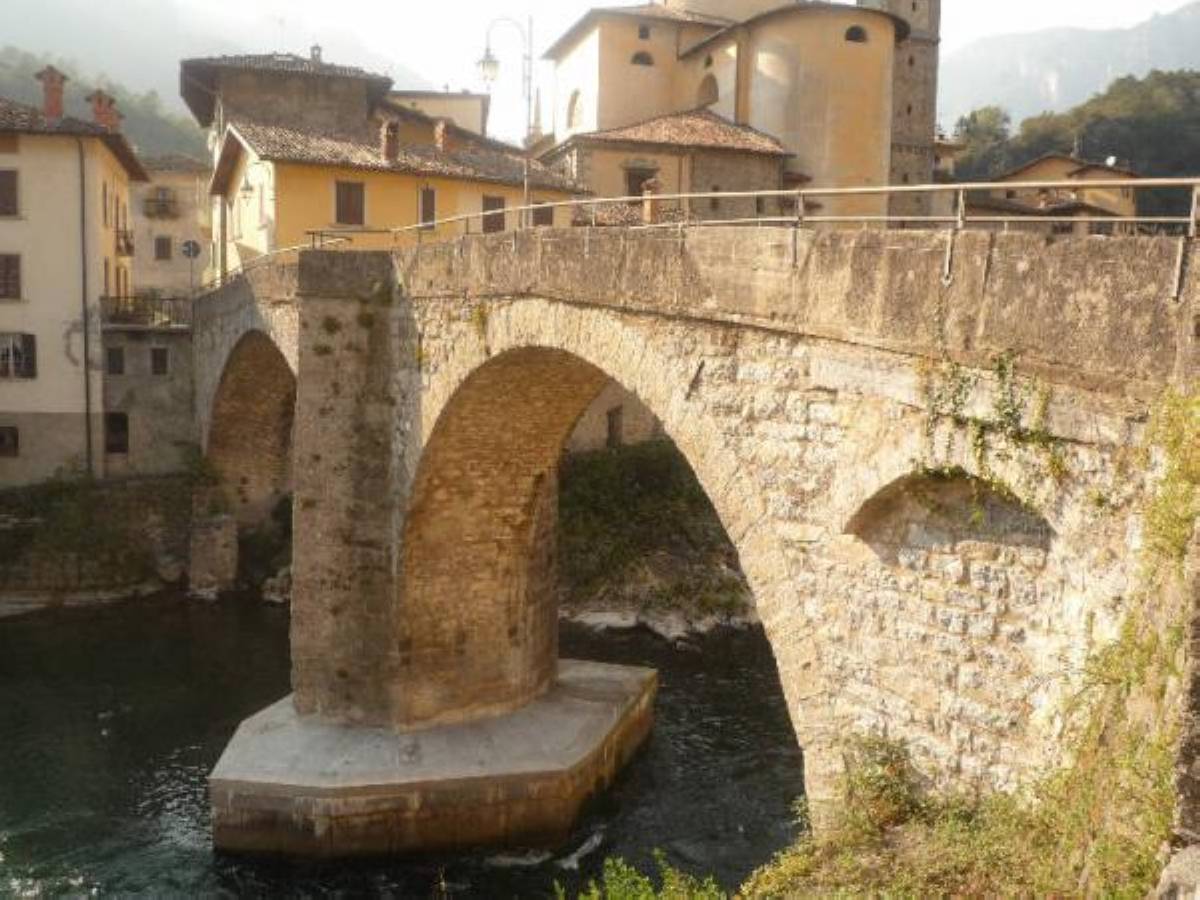
The Ponte Vecchio (Old Bridge) is the oldest bridge in San Giovanni Bianco. It is a 15th-century bridge over which Via Mercatorum ran, linking Bergamo to Valtellina coming up from the lower Seriana Valley and connecting some of the most important valley towns such as Serina, Dossena and Cornello. In the late 16th century, Via Mercatorum was replaced by a new road: the Priula Way. This road connected Bergamo and Valtellina, running along the Val Brembana valley to the Passo San Marco pass. At San Giovanni Bianco, the Priula Way ran over the single-arched bridge that still today joins the banks of the river Enna at Palazzo Boselli, the point where the roads intersect (http://mercatorumpriula.eu/patrimonio/ponte-vecchio-e-ponte-priula/).
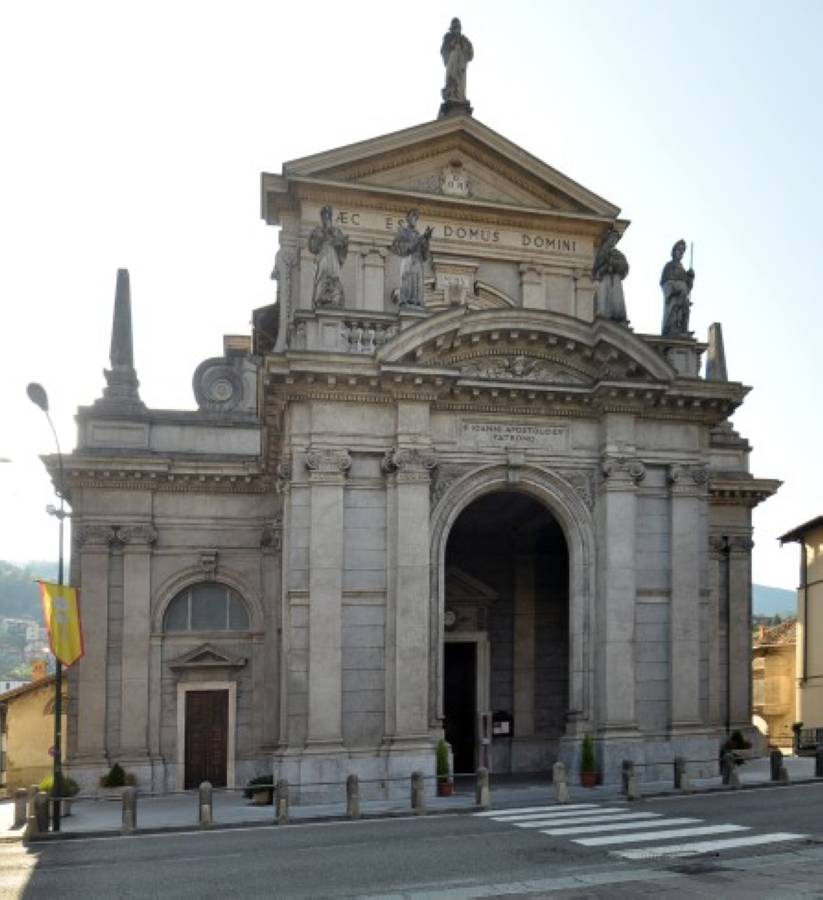
Parish church of San Giovanni Apostolo (St. John the Apostle). A religious building in Neoclassical style, the result of a mid-19th century refurbishment of a pre-existing Gothic church consecrated in 1447. The Latin cross plan has three naves, separated by circular columns with marble bases. One of the side altars holds a precious relic, the Holy Thorn, object of veneration by the faithful. Highlights amongst the paintings include three canvases by Carlo Ceresa and other 17th-century works.
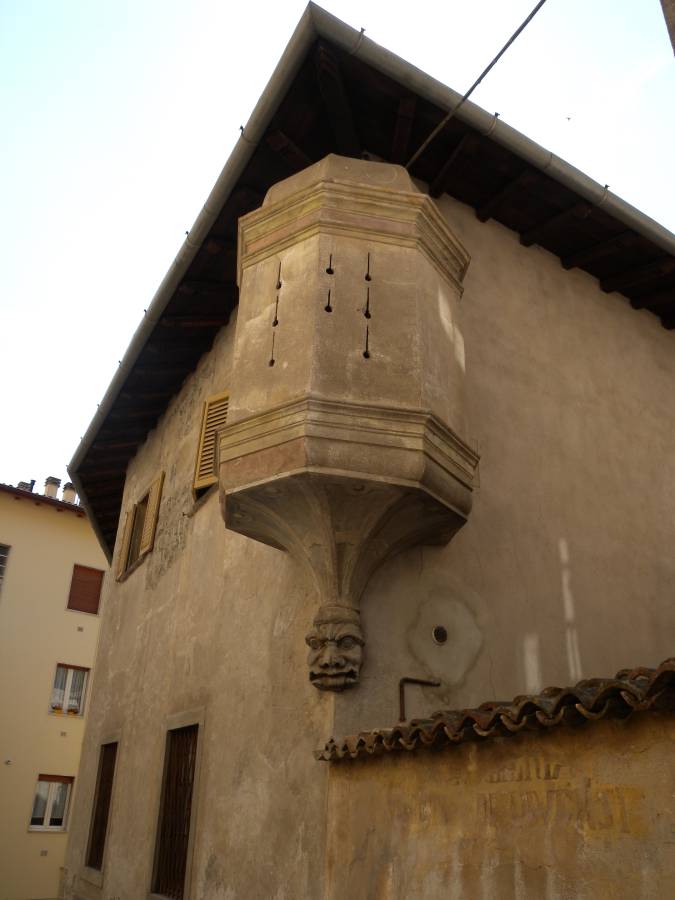
This is an imposing 15th-century residential building with a layout that was originally fortified. It is now a parsonage, for which it is in a good position where the valley road meets the Taleggio Valley side road. The watchtower protruding from a corner of the building is interesting. Some of the Baroque interiors have decorated timber ceilings, frescoes with Arcadian subjects, and paintings from various periods.
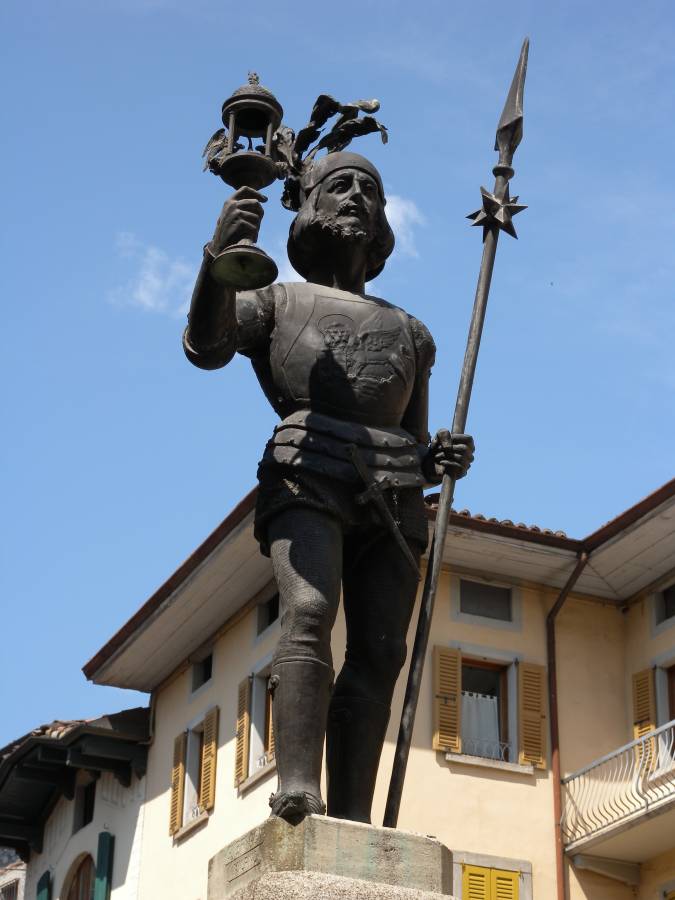
Monument to Vistallo Zignoni. The most illustrious citizen of San Giovanni Bianco was Vistallo Zignoni, an astute and courageous mercenary. During the Battle of Fornovo, fought in 1495 between troops in the pay of Venice and Charles VIII, King of France, Zignoni seized a casket containing the relics of the Passion of Christ. Giving it to the Doge, in exchange he received a thorn from the Holy Crown which could then be donated to the church of San Giovanni (St. John). From then on, every year on Good Friday, the prodigy of the blossoming of the Holy Thorn took place regularly. In 1598, the relic was stolen. Once the culprit had been identified, he was punished by having his right hand cut off, followed by being hanging and burnt at the stake, but from then on the miracle ceased to occur. It was only in 1932 that the relic once again acquired on a vermilion-coloured stain. That event attracted 200,000 pilgrims to San Giovanni Bianco and it is said to occur every time that Good Friday falls on 25 March.
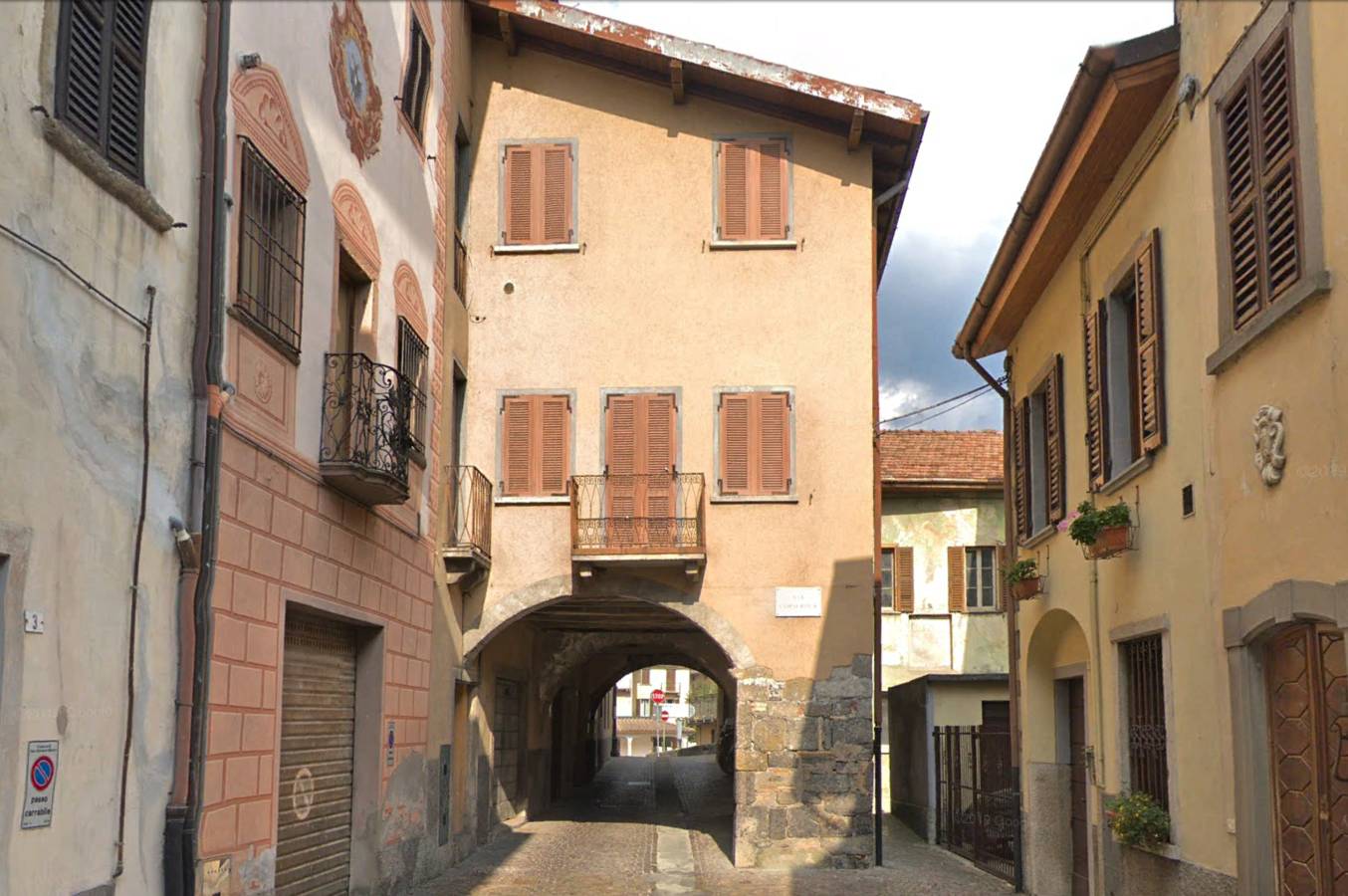
Buildings on Via Corserola and Via Pretura. Beautiful 17th and 18th-century buildings flank these two streets, along the original route of the Priula Way, with large arched porticoes where merchandise used to be stored on its way to the upper valley or to the branching Val Taleggio valley.
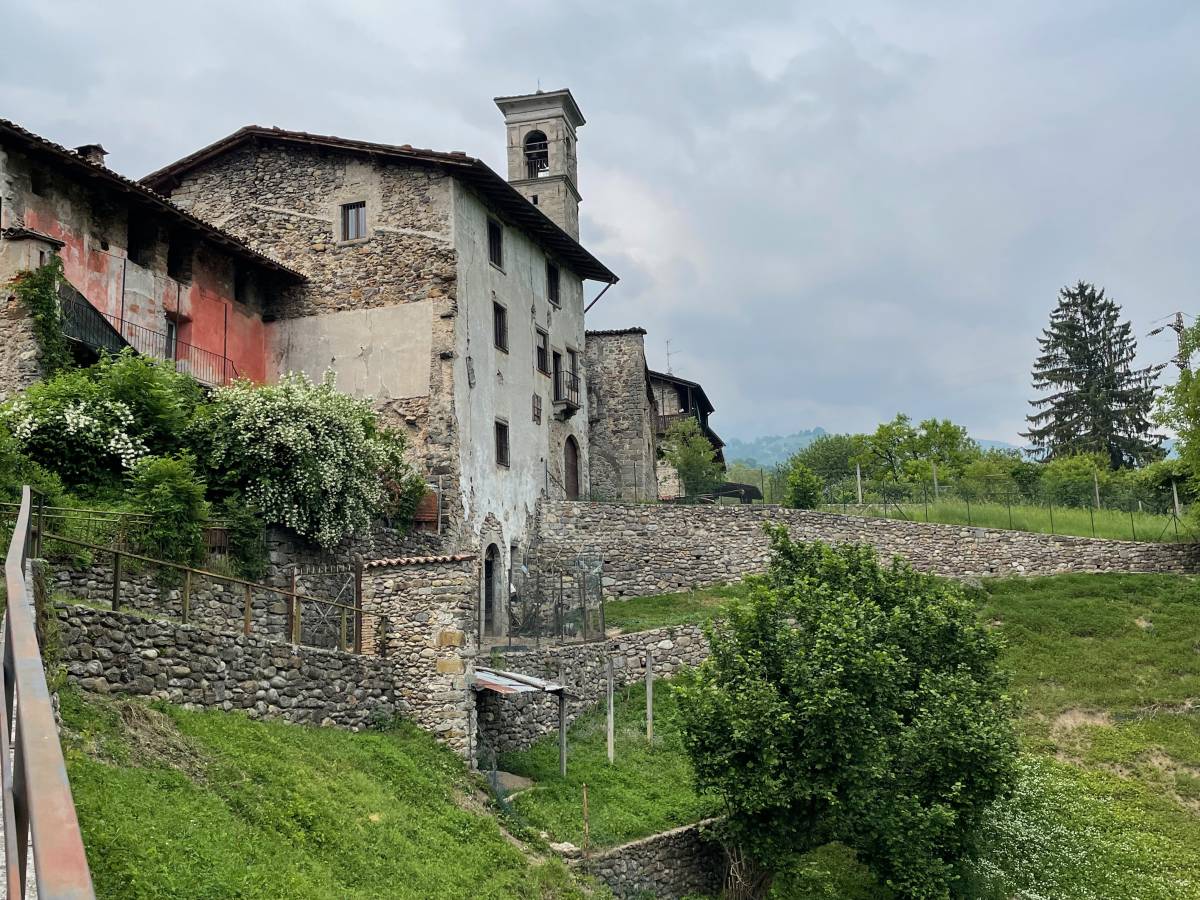
A well-preserved historic hamlet, benefiting from the restricted vehicular access, with porticoes and houses with wooden loggias and iron window grilles.
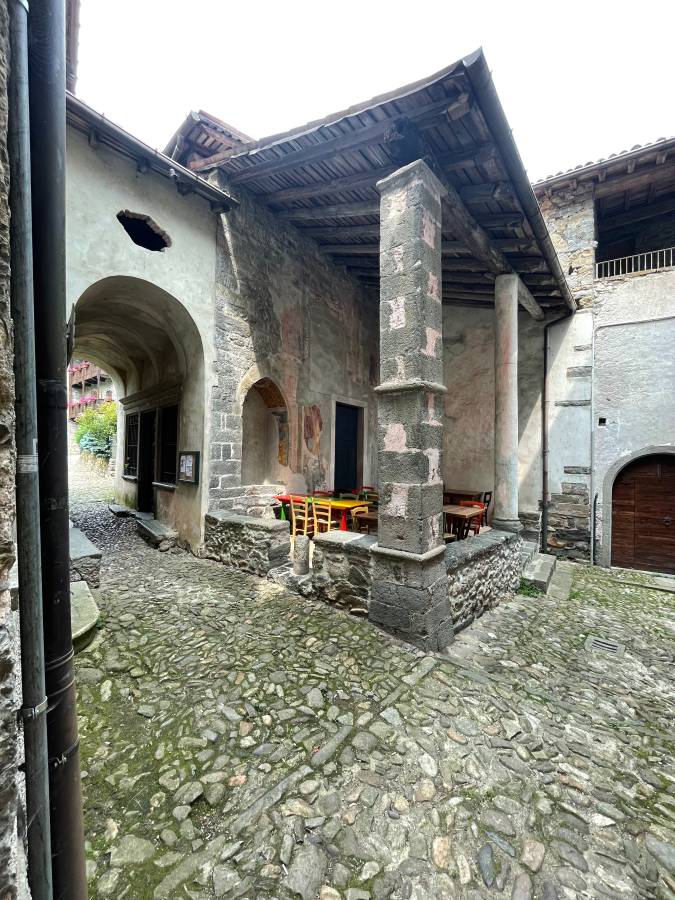
Carmine Church in Oneta. Built in about 1473 on commission from the Grataroli family, the church preserves two paintings by Ceresa and various frescoes. Outside, under the simple portico, there are St. John the Baptist and a large St. Christopher, positioned to protect wayfarers on Via Mercatorum. The single-nave interior is decorated with works of art from various ages: there is a wooden statue of the Madonna del Carmine enthroned on the high altar, a painting of the Nativity of the Virgin of Carmel by Carlo Ceresa, another image of the Madonna believed to be miraculous, and four 18th-century votive offerings hanging on the side walls. A delightful Madonna with Children, a fresco dating back to the 16th century, can be seen in the sacristy (https://www.visitbrembo.it/it/dove-andare/poi/chiesa-madonna-del-carmelo).
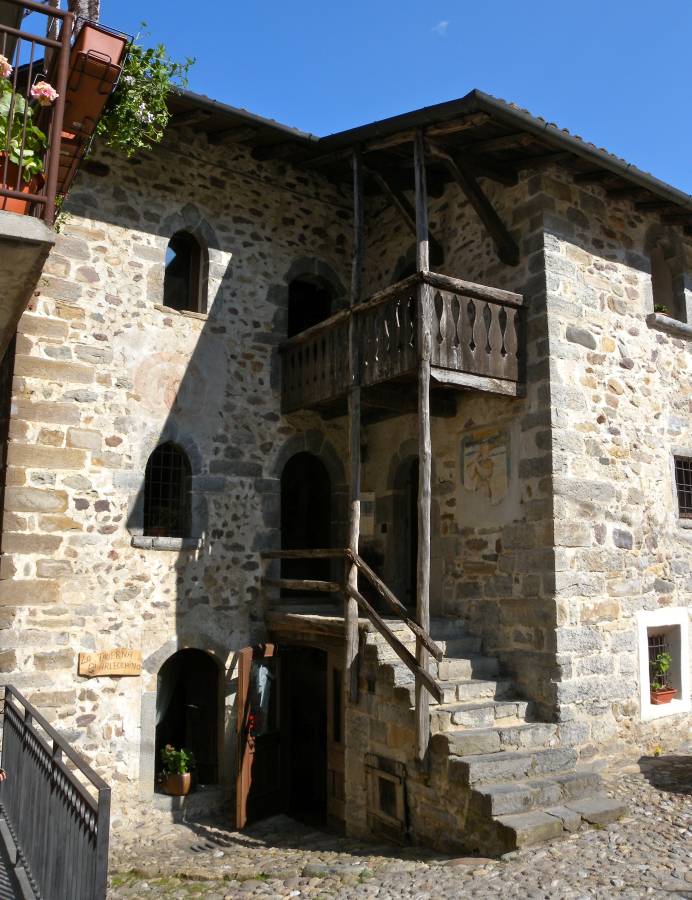
Harlequin’s House. Although there is no certain evidence, the idea that Harlequin, prince of the Carnival, lived in one of these houses in Oneta is certainly an intriguing concept. The candidate building has a restaurant on the ground floor and, on the upper floor, there are some rooms with frescoes relocated there. It dates back to the 15th century and was the home of the Grataroli family, who had accumulated wealth and fortune in Venice. One of the servants of this family began to perform as himself on stage, and later, other actors from Bergamo who lived in these quarters imitated him, bringing the character to courts all over Europe. On the outer wall of the house is a fresco with a cartouche bearing a strange but effective inscription: “Chi no è de chorte-sia non intragi in chasa mia, se ge venes un poltron ge darò dal mio baston” (Anyone who is impolite should not enter my house, if they sit on my chair, I will beat them with my stick). The image depicts a man covered in thick hair that could perhaps represent the notorious “homo selvatico”, a mysterious Alpine yeti, the original version of which is painted on the wall of a barn in Sacco, near Morbegno, at the end of the Priula Way. But the halo and the inscription “S. Onofrio” cast some doubts over the attribution, though it is tempting to imagine an extravagant personality whose exuberant costume could be considered as an unknown ancestor of Harlequin.
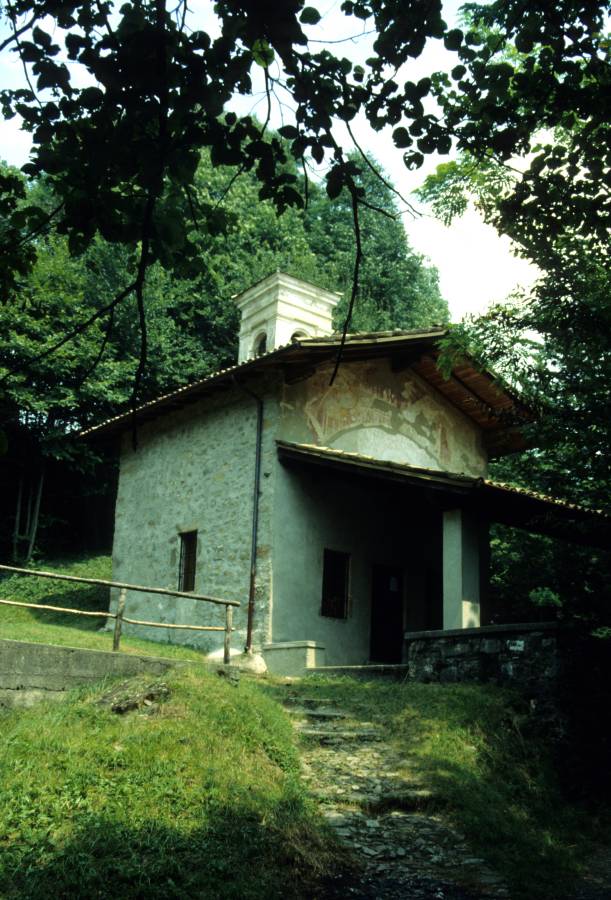
(Oratory of St. Anne). A small countryside oratory, located on a wooded knoll with an equipped picnic area alongside.